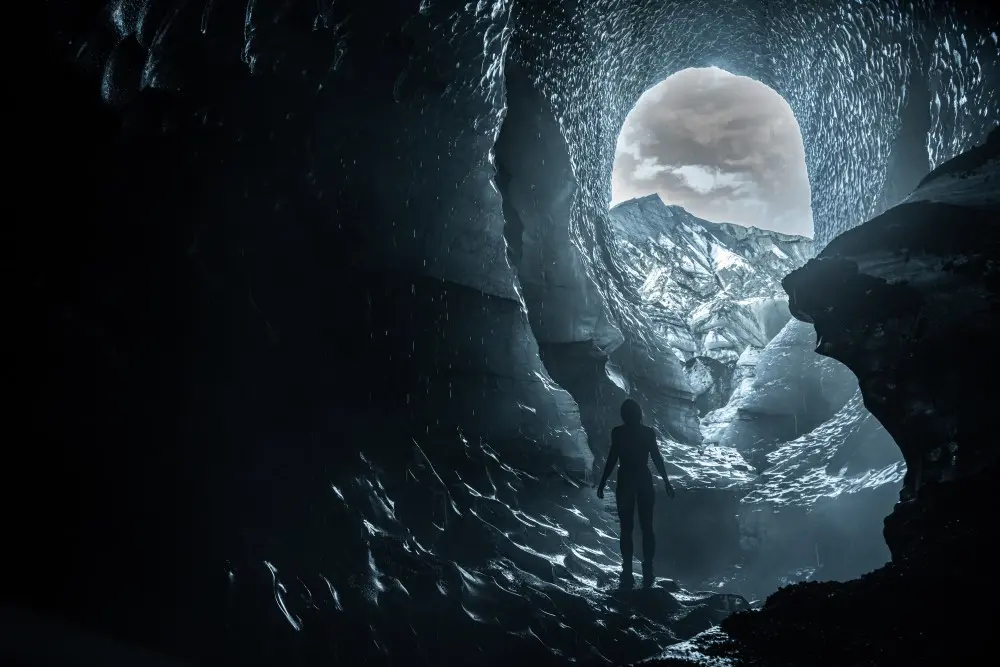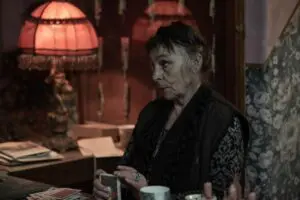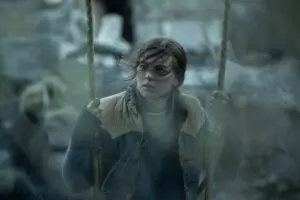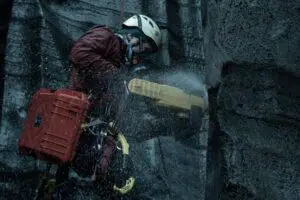Summary
A rich atmosphere and compelling mysteries keep Katla engaging even as it takes its sweet time to get to the point.
This review of Katla is spoiler-free.
In Netflix’s new Icelandic original, Katla is the name of a subglacial volcano that has been erupting for a year straight, which is fitting since “glacial” could quite easily describe the speed of the plot. As with a lot of Nordic television, the show’s responsibility to its atmosphere trumps its responsibility to any other storytelling concern; the last-minute cliffhangers that cap off a lot of the eight episodes feel like a cheap concession to keep you watching, even though you know you’re unlikely to get any concrete answers in the next episode or even the one after that.
You do keep watching, though. I often had to parse if that was because I was obligated to finish the season for this review or if I was genuinely compelled, and more often than not I decided it was a mixture of both. Katla can be frustrating with how many questions it piles atop of one another without even having provided an answer to the mysteries near the bottom, but it’s also one of those shows that want to knock the entire house of cards down at once. It’s worth persevering with, in other words, and it provides plenty to chew on in the meantime.
Katla isn’t just a volcano — or at least it doesn’t seem to be. One of the first things that happens in Katla is a naked woman emerges from its fiery fissures covered in clay and ash, and she may or may not be a woman who was last seen in the small town of Vik, which has been ravaged by the continuous eruption, 20 years prior. The next to emerge is Asa (Íris Tanja Flygenring), the missing sister of the show’s protagonist, Grima (Guðrún Ýr Eyfjörð), who disappeared at the beginning of the eruption. This is all I’m willing to give away. There are more discoveries and reappearances, links to Grima and Asa’s father, Thor (Ingvar Sigurdsson), potential mysteries both criminal and supernatural for local official Gisli (Þorsteinn Bachmann) to unpack, and scientific riddles about the nature of Katla itself to be solved. There’s a lot going on here, but most of it only happens at the beginning and end of episodes — the middle stretches are reserved for the development of character and atmosphere, so brace yourself for long stretches of wordless weirdness set to choral music and involving flashbacks, visions, ominous animal behaviour, and leaden soothsaying, with the local hotel’s proprietor, Bergrun (Guðrún Gísladóttir), reading the cards and cups of anyone who happens by.
The show will have to thank the performances for any success it might enjoy. This is a largely humourless affair, but a large cast of characters sell both the hardships of the existence that those in Vik are experiencing thanks to the environmental devastation of the volcano and the traumas unearthed by the various people and predicaments that emerge from it. There are overt allusions to old local legends, time travel, alternate realities, and other far-flung concepts that wouldn’t take if they weren’t treated with absolute seriousness, but Katla is up to the task in that regard. It’s a determined slow burn that keeps its cards close to its chest for perhaps too much of its runtime, so mileage will vary, but it’s worth a look for those who want their moody Nordic TV fix.




